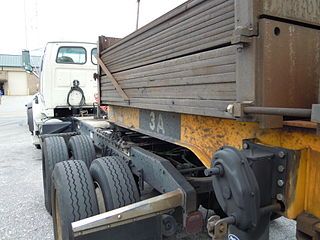From Guest Blogger Steve: How Green Logistics Protects the Environment and Boosts Profits

Logistics is the technical term for the distribution of products and goods across the country from warehouse to truck to stores and customers’ homes all across the country. Ensuring this intricate, constant flurry of transportation occurs as efficiently as possible, minimizing waste and emissions, is key to securing our energy future.
As energy costs rise and distribution becomes more complex, companies are increasingly outsourcing this job to third party logistics (3PL) providers. Outsourcing has helped make distribution more cost effective and energy efficient, mostly because it encourages the consolidation of shipping and warehousing, but also because logistics professionals continually seek greener ways of doing business.
Costs always a concern
Although green logistics is an emerging trend, the rising cost of fuel has accelerated its growth. In 2013, green supply chain-related services ranked as the least used by companies shipping products, according to the 3PL Study industry report. However that same year, 52 percent of shippers said fuel efficiency and carbon emissions factored heavily into procurement decisions.
Companies’ ongoing concerns over costs are increasingly convincing them to examine greener, more efficient practices — even if many remain fearful that going green will cost too much. Fortunately, saving money and saving the planet are not mutually exclusive. It’s possible to accomplish both.
Here are several ways the growing movement toward energy efficient commercial trucking is also helping to boost companies’ bottom lines:
- Consolidated commercial trucking: Third party logistics companies carefully orchestrate shipping routes from origin to destination. Because third-party providers distribute products from multiple companies, trucks are always as full as possible, reducing the number of trips taken and maximizing loads. If a small company were to operate its own distribution, it might be forced to send out half-empty shipments simply because packages must go out. 3PL, however, allows companies to consolidate their routes and achieve more with greater efficiency.
Maximizing trucking space on distribution routes decreases costs for fuel, maintenance and shipping while drastically reducing carbon dioxide emissions.
- Warehousing: Companies that don’t want to build their own warehouse, have not reached a size that demands it, or that need space on short notice, often rely on third party logistics providers to store goods. Again, consolidating operations helps companies save money and contribute to a healthy environment.
Fewer warehouses mean less land taken up by industrial facilities, reduced energy costs associated with heating, cooling and electricity, and fewer machines to run.
3PL providers who offer warehousing services often implement measures designed to cut waste or promote energy efficiency. Since operating logistics is a distribution company’s sole job, 3PL providers have the time and imperative to research the most up-to-date, efficient operating methods. One industry study revealed that a warehouse’s lighting absorbs 80 percent of its overall energy consumption. Something as simple as installing energy-efficient light bulbs saves money — a savings that 3PL providers may pass on to their customers.
Another simple, but effective change involves switching to lighter-gauge shrink wrap, which can save thousands of pounds of plastic each year, reducing supplies used and waste created.
- Service consolidation: Logistics providers offer the opportunity to consolidate supply chain demands, including packaging, distribution and managing returned inventory. Many companies operate these processes separately from each other. 3PL providers, however, run them in conjunction to reduce shipping times, processing times and further consolidating the number of trucks on the road.
Logistics providers are well-equipped to look at the distribution process holistically, making the entire chain runs efficiently — which is good for cost and the environment.
Although ensuring that sustainability measures are cost effective is a significant concern for business owners, environmentally friendly logistics methods don’t automatically cost more than standard practices. Through consolidating efforts and excising inefficiencies, companies can become leaner, more profitable and more environmentally friendly. Green logistics will only become more prevalent in coming years as public pressure builds and additional government regulations pass.
A third party logistics provider is a natural fit for ensuring a company’s distribution system is the most efficient, cost effective and green possible.
This guest blog post was published compliments of Steve Updike Vice President / Principal at Updike Distribution Logistics, LLC, a Phoenix, Arizona-based distribution company.

Reblogged this on Argos Software.